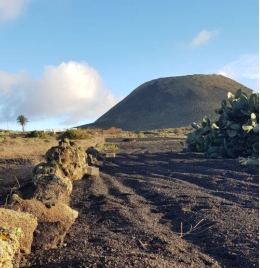A study reveals the presence of murine coronavirus in Canary Islands mice population
A study published in Frontiers in Veterinary Science reveals the presence of murine coronavirus ─the murine hepatitis virus or M-CoV─ in mice of the Canary archipelago that could have reached the islands by maritime transport from the European continent. This is the first ecoepidemiological study to examine the presence of coronaviruses that circulate in mice and rats of the natural and urban environment of the islands of La Palma, El Hierro, Tenerife and Lanzarote.
The study is led by Jordi Serra-Cobo, lecturer at the Faculty of Biology and member of the Biodiversity Research Institute (IRBio) of the University of Barcelona, and counts on the participation of teams from the Faculty of Pharmacy and Food Sciences and the University Institute of Tropical Diseases and Healthcare of the University of La Laguna, among other institutions.
M-CoV: a virus studied in laboratory mice
The pandemic caused by SARS-CoV-2 has placed coronaviruses at the focus of an intense research activity worldwide. Over the last years, five new coronaviruses have been identified: SARS-CoV, HCoV-NL63, HCoV-HKU1, MERS-CoV and SARS-CoV-2. These viruses have been identified as viruses able to cause respiratory pathologies in humans.
The murine hepatitis virus (M-CoV) is a coronavirus that was first isolated in 1947 in rodents. Although contagion to human population has not been registered, the virus is highly infectious and is mainly transmitted through aerosols and direct contact. This pathogen has been mainly studied in laboratory mice, and there are few studies carried out in wildlife. “The murine hepatitis virus is highly infectious and is one of the most common pathogens in laboratory mice. The symptoms of this infection vary depending the genotype and age of the mouse. This virus can be very aggressive in mice, and tends to cause hepatitis, enteritis and encephalitis”, notes Jordi Serra-Cobo, UB and IRBio expert on ecoepidemiological studies.
As part of the research, carried out from 2015 to 2019, the team applied the nRT-PCR technique on faecal samples of three species of rodents (Mus musculus, Rattus rattus and Rattus norvegicus) to detect the potential presence of coronaviruses. These mice and rats, which are not native species in the Canary Islands, arrived in the archipelago centuries ago and have spread all over the geography of the islands.
The results revealed the presence of M-CoV RNA in the population of the house mouse Mus musculus in the urban environments of three islands ─El Hierro, Tenerife and Lanzarote─ in a similar proportion both at a geographical and time scale. Regarding the black rat (R. rattus) and the brown rat (R. norvegicus), all the results for the detection of M-CoV were negative.
A journey from the European continent to the Canary archipelago
Everything indicates that the murine coronavirus ─from the genera Betacoronavirus and subgenera Embecovirus─ found in the mice of the Canary archipelago is phylogenetically related to the murine coronaviruses of the European continent. In particular, to the coronavirus that was first identified in 2010 in wild populations of mice Mus musculus and the bank vole (Myodes glareolus) by the team led by Professor Jan Felix Drexler (University of Bonn, Germany).
“The obtained data showed us that the most probably origin is European, which makes sense if we consider the high trade relationship between the Canary Islands and Europe”, notes lecturer Jordi Serra-Cobo.
The differentiation between the coronavirus strains between the Canary Islands and the continental viruses would be a fairly recent process over time. Another important aspect is the diversity of M-CoV variants circulating in the population of house mice in the three islands.
Coronaviruses, invasive species and global health
The paper published in Frontiers in Veterinary Science shows the potential role of rodents ─and other invasive species that dwell outside their area of natural distribution─ in the spreading process of infectious diseases.
In this context, it is a priority to control the arrival of non-native species that are potential reservoirs of pathogens, specially in insular environments. In addition, in the case of mice, alfa and beta coronaviruses are relatively frequent and as research studies make advances, new pathogen strains are identified in these rodents.
“Regarding global health ─says Serra-Cobo─ the study warns us about the arrival of microorganisms that can be pathogen for the local fauna or the human species, together with the arrival of non-native species. The murine coronavirus affects species of rodents, but considering the fast evolution of these viruses, we cannot rule out the possibility of its adaption to infect other groups of mammals”.
“Therefore, it is important to analyse the goods that arrive and the holds, specially in boats, to check there are no rodents. This is not easy, but it is necessary in order to prevent the spread of not only M-CoV but also other viruses, which in some cases can be zoonotic and therefore cause infections on the human population”, concludes lecturer Jordi Serra-Cobo.
Reference article:
Monastiri, A.; Martín-Carrillo, N.; Foronda, P.; Izquierdo-Rodríguez, E.; Feliu, C.; López-Roig, M.; Miquel, J.; Gouilh, M. A; Serra-Cobo, J. «First coronavirus active survey in rodents from the Canary Islands». Frontiers in Veterinary Science, August 2021. Doi: 10.3389/fvets.2021.708079
Source:PressUB
